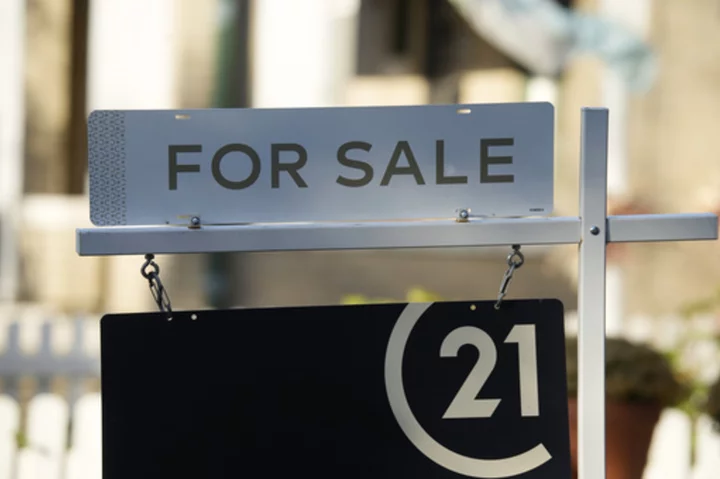LOS ANGELES (AP) — The average rate on the benchmark 30-year home loan fell for the second week in a row, positive news for prospective homebuyers after rates touched a 22-year high just last month.
The latest decline brought the average rate on a 30-year mortgage down to 7.5% from 7.76% last week, mortgage buyer Freddie Mac said Thursday. A year ago, the rate averaged 7.08%.
As mortgage rates rise, they can add hundreds of dollars a month in costs for borrowers, limiting how much they can afford in a market already out of reach for many Americans. They also discourage homeowners who locked in far lower rates two years ago, when they were around 3%, from selling.
The combination of rising mortgage rates and home prices have weighed on sales of previously occupied U.S. homes, which fell in September for the fourth month in a row, grinding to their slowest pace in more than a decade.
This average rate on a 30-year mortgage is now at the lowest level it's been since the first week of October, when it was 7.49%.
Borrowing costs on 15-year fixed-rate mortgages, popular with homeowners refinancing their home loan, also declined, with the average rate falling to 6.81% from 7.03% last week. A year ago, it averaged 6.38%, Freddie Mac said.
The average rate on a 30-year home loan climbed above 6% in September 2022 and has remained above that threshold since, reaching 7.79% two weeks ago. That was the highest average on record going back to late 2000.
Rates have risen along with the 10-year Treasury yield, which lenders use as a guide to pricing loans. Investors’ expectations for future inflation, global demand for U.S. Treasurys and what the Fed does with interest rates can influence rates on home loans.
The yield on the 10-year Treasury had been rising in recent weeks, jumping to more than 5% two weeks ago, its highest level since 2007, as bond traders responded to signals from the Federal Reserve that the central bank might have to keep its key short-term rate higher for longer in order to tame inflation.
But long-term bond yields have been easing since last week, when the Federal Reserve opted against raising its main interest rate for a second straight policy meeting.
The yield was at 4.54% in midday trading Thursday. It was at roughly 3.50% in May and just 0.50% early in the pandemic.

